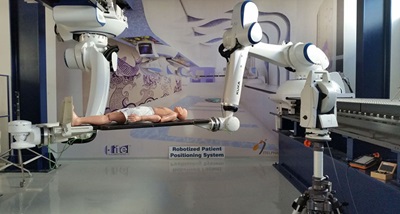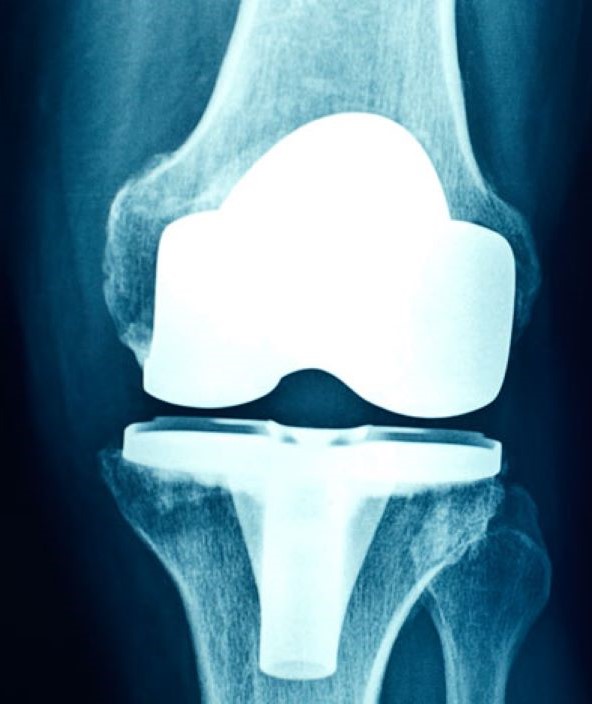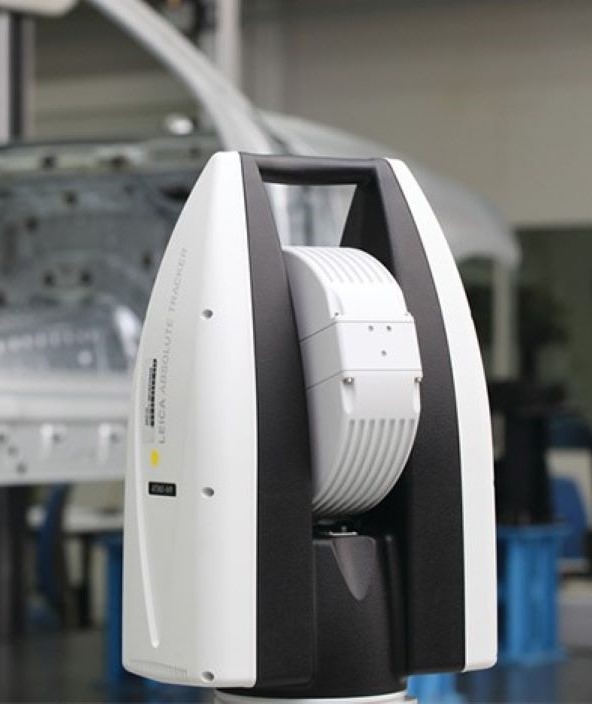Positioning for life
Itel Telecomunicazioni - Italy
Contact us
A laser tracker and its ability to be the reference for positioning tasks makes the targeting of proton beams used in radiotherapy more precise.
The application of laser tracker technology for the correct positioning of parts to be assembled or of machine tools is now established in various fields of industrial production. The accuracy with which it is possible to detect the position of objects in 3D is very high – within a few hundredths of a millimetre – making it possible to handle such objects with extreme accuracy through the correct processing of the measured coordinates.
Sometimes, and with increasing frequency, these technologies initially conceived to be useful in the manufacturing industry spill over into different sectors that require just as much accuracy.
This is the case with the Robotised Patient Positioning System (RPPS) project, carried out by Itel Telecomunicazioni in Ruvo di Puglia, in the province of Bari.
This company, founded in 1982, specialises in the engineering and installation of devices for magnetic resonance, image diagnostics, nuclear medicine and advanced radiotherapy. Strongly oriented towards innovation and research, Itel has created and installed systems in 40 countries all over the world and is currently working on perfecting an innovative Proton Therapy system for fighting tumours.
Raffaele Andrea Prisco, the company’s R&D Manager, explained how the Leica Absolute Tracker AT401 laser tracker from Hexagon Manufacturing Intelligence has become part of the system.
has become part of the system.
“Nuclear medicine, initially used for advanced diagnostics, is evolving rapidly towards therapeutic applications, especially the treatment of neoplasms with concentrated radiation. We are working on a proton accelerator capable of releasing a much higher dose of energy, compared to other radiations used up until now (photons and electrons), on targeted masses, with the potential to cure nearly 95% of the neoplasms instead of the 75% cured currently. Consequently, the percentage of recurrence and metastasis in the long term is reduced. The properties of the proton beams allow a high dosage of the particles against the target and a limited release of radiation on the surrounding healthy tissue, and consequentially a limited probability of collateral effects typical of radiotherapy treatments.”
The proton accelerator is a large and extremely complex machine, enclosed within a concrete bunker. All this is totally invisible to the patient, who is instead treated in a room where the bed he or she lies in is positioned by two Kuka anthropomorphic robots.
“The effectiveness of the treatment is much higher, as is the ballistic precision with which we are able to target the tumorous area to be treated, which is inside the patient’s body. The proton accelerator, given its dimensions and characteristics, cannot be moved or oriented. As a result, it was necessary to find a way to position the patient being treated with the utmost precision. The bed can be oriented in any direction in space by a pair of robots. The need for the proton beam to strike the treatment zone with millimetric precision has generated the need to control and correct the position and orientation of the bed in space. This is where the help of the Hexagon laser tracker comes in. The reflectors are positioned on the bed and controlled by the trackers, which enable us to verify the patient's position in real time and, if necessary, ‘correct the aim’. The precision with which the tracker detects the position, which has been demonstrated to be within a few hundredths of a millimetre, can guarantee that the chain of errors that amount during the aiming of the proton beam are limited to a couple of millimetres, thereby operating at the maximum efficiency and safety.”
Given this very particular application, it was not possible to use any of the software normally provided together with the laser tracker. The Itel development team therefore created a dedicated interface capable of dialoguing directly with the tracker firmware and managing all the operations.
“The use of the laser tracker,” concludes Prisco, “was not an innovation linked to this project: they are used for other control, positioning and alignment operations for systems in a variety of activities. It was only natural to think of the same instrument when we defined the characteristics of the RPPS system and the results were, as we expected, more than satisfactory.”
The application of laser tracker technology for the correct positioning of parts to be assembled or of machine tools is now established in various fields of industrial production. The accuracy with which it is possible to detect the position of objects in 3D is very high – within a few hundredths of a millimetre – making it possible to handle such objects with extreme accuracy through the correct processing of the measured coordinates.
Sometimes, and with increasing frequency, these technologies initially conceived to be useful in the manufacturing industry spill over into different sectors that require just as much accuracy.
This is the case with the Robotised Patient Positioning System (RPPS) project, carried out by Itel Telecomunicazioni in Ruvo di Puglia, in the province of Bari.
This company, founded in 1982, specialises in the engineering and installation of devices for magnetic resonance, image diagnostics, nuclear medicine and advanced radiotherapy. Strongly oriented towards innovation and research, Itel has created and installed systems in 40 countries all over the world and is currently working on perfecting an innovative Proton Therapy system for fighting tumours.
Raffaele Andrea Prisco, the company’s R&D Manager, explained how the Leica Absolute Tracker AT401 laser tracker from Hexagon Manufacturing Intelligence
“Nuclear medicine, initially used for advanced diagnostics, is evolving rapidly towards therapeutic applications, especially the treatment of neoplasms with concentrated radiation. We are working on a proton accelerator capable of releasing a much higher dose of energy, compared to other radiations used up until now (photons and electrons), on targeted masses, with the potential to cure nearly 95% of the neoplasms instead of the 75% cured currently. Consequently, the percentage of recurrence and metastasis in the long term is reduced. The properties of the proton beams allow a high dosage of the particles against the target and a limited release of radiation on the surrounding healthy tissue, and consequentially a limited probability of collateral effects typical of radiotherapy treatments.”
The proton accelerator is a large and extremely complex machine, enclosed within a concrete bunker. All this is totally invisible to the patient, who is instead treated in a room where the bed he or she lies in is positioned by two Kuka anthropomorphic robots.
“The effectiveness of the treatment is much higher, as is the ballistic precision with which we are able to target the tumorous area to be treated, which is inside the patient’s body. The proton accelerator, given its dimensions and characteristics, cannot be moved or oriented. As a result, it was necessary to find a way to position the patient being treated with the utmost precision. The bed can be oriented in any direction in space by a pair of robots. The need for the proton beam to strike the treatment zone with millimetric precision has generated the need to control and correct the position and orientation of the bed in space. This is where the help of the Hexagon laser tracker comes in. The reflectors are positioned on the bed and controlled by the trackers, which enable us to verify the patient's position in real time and, if necessary, ‘correct the aim’. The precision with which the tracker detects the position, which has been demonstrated to be within a few hundredths of a millimetre, can guarantee that the chain of errors that amount during the aiming of the proton beam are limited to a couple of millimetres, thereby operating at the maximum efficiency and safety.”
Given this very particular application, it was not possible to use any of the software normally provided together with the laser tracker. The Itel development team therefore created a dedicated interface capable of dialoguing directly with the tracker firmware and managing all the operations.
“The use of the laser tracker,” concludes Prisco, “was not an innovation linked to this project: they are used for other control, positioning and alignment operations for systems in a variety of activities. It was only natural to think of the same instrument when we defined the characteristics of the RPPS system and the results were, as we expected, more than satisfactory.”


